#notre-dame de paris
Text
He could not make up his mind whether she was a human being, a fairy, or an angel.
Victor Hugo, Notre-Dame de Paris
#Victor Hugo#Notre-Dame de Paris#dark academia aesthetic#academia aesthetic#chaotic academia#classic academia#light academia aesthetic#dark academia#soft academia#romantic academia#study motivation#studyspo#studyinspo#studying#study aesthetic#study notes#study space#studygram#study blog#light academia#classic literature#poetry#art academia#art#books#libraries#book quotes#literature quotes#deep quotes#life quotes
222 notes
·
View notes
Photo
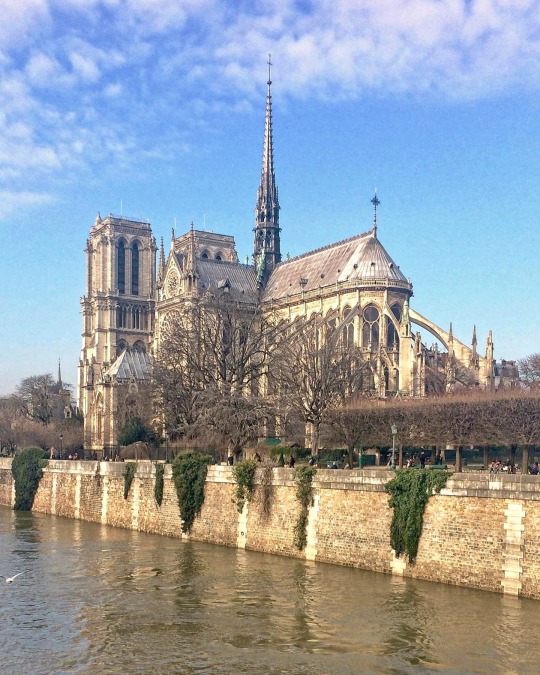
Notre-Dame de Paris. @elisabarg. - source Paris de mes Amours.
152 notes
·
View notes
Text


𝔑𝔬𝔱𝔯𝔢-𝔇𝔞𝔪𝔢 𝔡𝔢 𝔓𝔞𝔯𝔦𝔰 – 𝔗𝔞𝔳í𝔨 𝔉𝔯𝔞𝔫𝔱𝔦š𝔢𝔨 Š𝔦𝔪𝔬𝔫 (յՑԴԴ-յգկշ).
#Notre-Dame de Paris#Tavík František Šimon (1877-1942)#1877-1942#Tavík František Šimon#art#artwork#painting#illustrations#illustration#arts#paintings#landscape#notre dame de paris
80 notes
·
View notes
Text
224 pages and 39 illustrated plates relate in the smallest details the outfits, speeches and major stages of Napoleon’s coronation, which took place at Notre-Dame de Paris in the presence of Pope Pius VII.
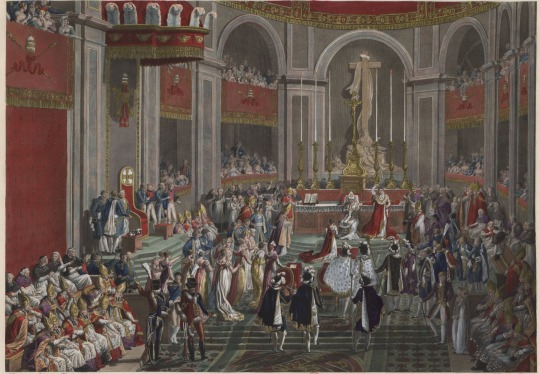
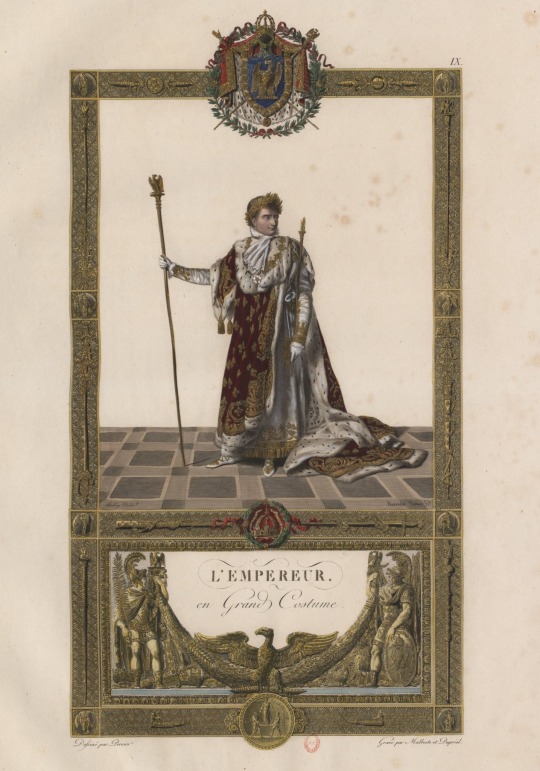
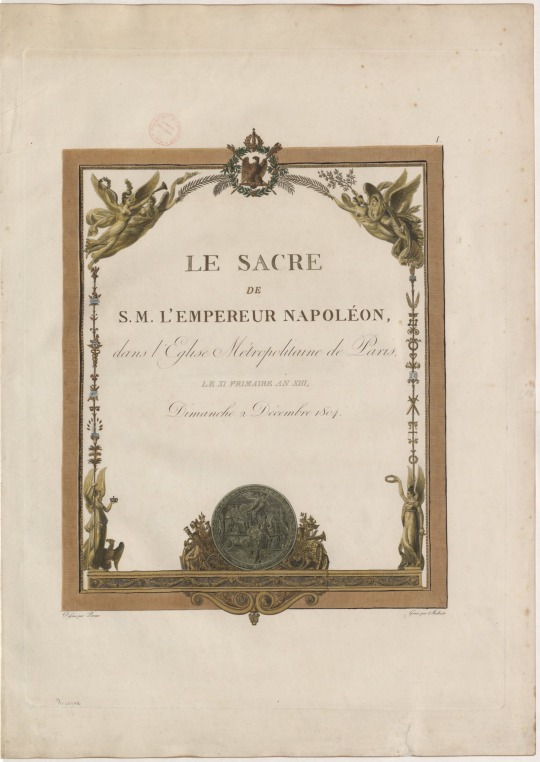
Source: Le sacre de S. M. l'Empereur Napoléon dans l'église métropolitaine de Paris, le XI frimaire an XIII dimanche 2 décembre 1804 (Gallica)
#Napoleon#napoleon bonaparte#napoleonic era#napoleonic#first french empire#19th century#french empire#france#coronation#history#french history#art#vintage#vintage book#books#emperor#Pope Pius VII#Pius VII#notre dame#notre-dame de Paris#notre dame de Paris#notre-dame#1800s#church#basilica#pope#sacre#Napoleon’s coronation
51 notes
·
View notes
Text


Look at these gorgeous bandes dessinées by Georges & Pia Bess. The books are huge and heavy, the size is perfect to appreciate the art.
Dracula, Frankenstein and Notre-Dame de Paris.
#bande dessinée#books#France#Georges Bess#Pia Bess#Bram Stoker#Dracula#Mary Shelley#Frankenstein#Victor Hugo#Notre-Dame de Paris#art#Glénat#collection
26 notes
·
View notes
Text

Template found on Pintrest, lightly modified.
#notre-dame de paris#the hunchback of notre dame#victor hugo#claude frollo#esmeralda#quasimodo#jehan frollo#clopin trouillefou#djali#fleur-de-lys#pierre gringoire#phoebus de chateaupers
11 notes
·
View notes
Text
Trivia of the day: In Victor Hugo's "Notre-Dame de Paris", Esmeralda is executed by hanging on the famous "gibet de Montfaucon". Yet this is quite untrue historically speaking, as, at the time era the novel takes place, when women were executed, they were either burned or walled alive.
This choice was part of Victor Hugo's personal fight and battle to abolish the death penalty in France, and can be understood by looking at his wider works. In his various poetic works he had an habit of using the "gibet de Montfaucon" as THE symbol of death penalty in all of its horror, cruelty and madness. The gibet of Montfaucon was indeed the biggest, most imposing, most used and most famous execution-monument of Paris, and Hugo made a lot of efforts to depict it as some sort of bloody and barbaric architectural embodiment of the "dark ages", even going as far as to compare it to a Celtic cromlech where pagan human sacrifices are taking place.
#notre-dame de paris#victor hugo#paris#history of paris#death penalty#execution#esmeralda#victor hugo's notre-dame de paris#the hunchback of notre-dame
15 notes
·
View notes
Text
Me: Yeah, Notre-Dame de Paris covers some really cool themes, but its portrayal of the Romani is really fucked up. All of them dirty sadistic criminals? Congrats on the great representation, Hugo, way not to fall for the discriminatory propaganda.
Victor Hugo, materializing as a ghost out of thin air: How dare you
Victor Hugo: Do you know who you are talking to
Victor Hugo: You are talking to the man who wrote, with his eyes and his heart and his bleeding fingers, The Last Day of A Condemned Man. The Man who Laughs. Ninety-Three. Les Misérables.
Victor Hugo: Do you think me a man to look at torment in the face and blame the dispossessed for their own suffering?
Victor Hugo: To talk about squalor is to talk about its causes and its natural consequences. In a city such as Paris, where all the lost souls converge only to find themselves kicked ever lower into the gutter, what else can they become? In the past as in my time and still in yours, Romani people are never protected by the law. Why should they abide by it? How could they abide by it? The "good society" complains about them being in the streets, while locking every door for them. What can they be in a world that loathes their very existence, but beggars, sex workers and, well, outlaws?
Me: ... I suppose it makes some sense, but-
Victor Hugo: Besides, not all the Romani are criminals at the Court of Miracles, and not all the criminals at the Court of Miracles are Romani.
Me: It's true that Esmeralda is and remains throughout the book a figure of kindness, honesty and innocence. She does bring some nuance to the portrayal of the Romani.
Me: Mr Hugo why are you glancing away
Me: Mr Hugo stay in this roOM WHAT DO YOU MEAN SHE'S A WHITE GIRL WHO WAS STOLEN AS A BABY BY THE EVIL GYPSIES
Me: VICTOR GET YOUR ASS BACK HERE
28 notes
·
View notes
Text
I’m listening to Frankenstein for the first time and
Frankenstein’s monster and Quasimodo are reversed in the original and pop culture.
people think that Quasimodo is a nice guy and the monster is a thoughtless violent being.
while in the books, Quasimodo is a mute who carries out his master’s orders until the very last moment and the monster is a fully intelligent person who understands why people hate him and is turned into a criminal by this understanding
the source of their pop culture treatment is, I guess, that Quasimodo redeems himself by murdering Frollo and the monster destroys Frankenstein’s life which is literally the same action: taking revenge against one’s parent. but Quasimodo does it on behalf of Esmeralda and the monster hurts other people for himself. plus, Frollo is seen as a villain and Frankenstein is just a stupid stem student
then, of course, Quasimodo is human and the monster is not quite one
however, as a disabled person and a living human who isn’t always happy to live a life, I find the monster a lot more relatable
this is the monster stan account now, he did nothing wrong, my poor little meow meow /not serious
51 notes
·
View notes
Text
Musical Theatre Song Contest: Round One C
youtube
youtube
Submitter’s propaganda under the cut
Belle
It’s one of the most beautiful, mesmerizing songs from a contemporary musical and has been translated in a bajillion languages, as well as being a massive hit in France and Russia.
I know it's in French but it slaps. The 3 singers all have distinctive voices and all sound great.
Usher, Pt. 3
[song CW: death] it's fun, mind-bending, creepy, confusing, and heartbreakingly sad all at once. and it SLAPS
this song is my literal favorite song in the whole world its so cool. its the climax of the show, and its a really good one. the interweaving of the usher and subway plot lines was really well done and really cool. i don't know like music theory or whatever, but i like the way it sounds, like those sure are some good sounds. can't explain it too you though. basically, it makes me feel things, and i like it a lot.
#musicaltheatresongs#song polls#round one#round 1 c#notre-dame de Paris#notre dame de Paris#belle#usher pt.3#ghost quartet#this poll is 100% going to be the hardest one for me to vote on#if you’ve been around for a bit you’ve seen me share propaganda for both shows in the past#Youtube
29 notes
·
View notes
Text
Oh ! l'amour ! dit-elle, et sa voix tremblait, et son œil rayonnait. C'est être deux et n'être qu'un. Un homme et une femme qui se fondent en un ange. C'est le ciel.
Victor Hugo, Notre-Dame de Paris
English: "'Oh, love!' said she, and her voice trembled and her eye brightened. 'That is to be two and yet but one. A man and a woman blended into an angel. It is heaven itself.”
#victor hugo#notre-dame de paris#auteur français#littérature française#xixème siècle#citation#littérature
12 notes
·
View notes
Text

Nicolas Eustache-Maurin - Dom Claude Frollo kisses La Esmeralda after stabing Phoebus, 1834. From Notre-Dame de Paris, 1831.
#Nicolas Eustache-Maurin#Frollo#La Esmeralda#Phoebus#rape in art#murder#dead#death#Notre-Dame de Paris
11 notes
·
View notes
Text


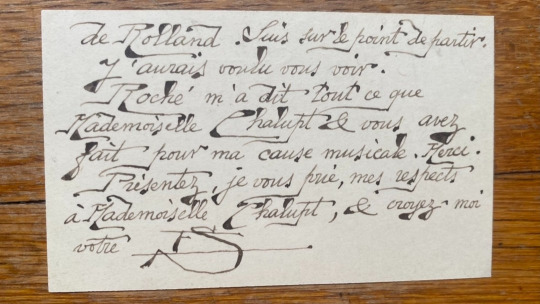
OTD in Music History: Composer and French cultural icon Erik Alfred Leslie Satie (1866 - 1925) is born in France.
The son of a French father and a British mother, as a young man, Satie briefly studied at the Paris Conservatory -- but was an undistinguished student who failed to obtain a diploma.
In the 1880's, he worked as a cafe pianist in Montmartre, where he began composing solo piano works, including his most famous set, the "Gymnopedies." (He also wrote music for a Rosicrucian sect to which he was briefly attached.)
After a spell during which he composed little, Satie enrolled at a second music academy -- Vincent d'Indy's (1851 - 1931) "Schola Cantorum" -- as a mature student. His studies there were far more successful than those at the Conservatory, and from 1910 onward he became the focus of successive waves of young composers who were attracted by his unconventionality and originality.
Among them were the group known as "Les Six," and a 1915 meeting with Jean Cocteau (1889 - 1963) led to the creation of the ballet "Parade" (1917) for impresario Serge Diaghilev (1872 - 1929), with music by Satie, sets and costumes by Pablo Picasso (1881 - 1973), and choreography by Leonide Massine (1896 - 1979).
Satie had a tremendous impact on pushing French music away from lush post-Wagnerian impressionism and towards a sparer, terser style. Among those directly influenced by him during his lifetime were Maurice Ravel (1975 - 1937) and Francis Poulenc (1899 - 1963), and he is also often cited as influence on later composers such as John Cage (1912 - 1992).
Satie was also one of the first "Dadaist" cultural figures -- some of his later works were given purposely absurd titles like "True Flabby Preludes (for a Dog)" (1912) and "Sketches and Exasperations of a Big Wooden Man" (1913).
PICTURED: An original copy of one of Satie's printed business card, identifying him as "Erik Satie, Composer of Music." He wrote a short social message on this copy in his trademark calligraphic handwriting.
#Erik Satie#Satie#composer#classical composer#classical music#bel canto#music history#classical studies#classical composers#Gymnopédies#Gnossiennes#Paris Conservatoire#Notre-Dame de Paris#Prélude#Danses gothiques#Enfantines#Allegro#Valse-ballet#Fantaisie-valse#Premier Menuet#Orchestra#Danse#Musique d'ameublement#Cabaret songs#songs
16 notes
·
View notes
Text

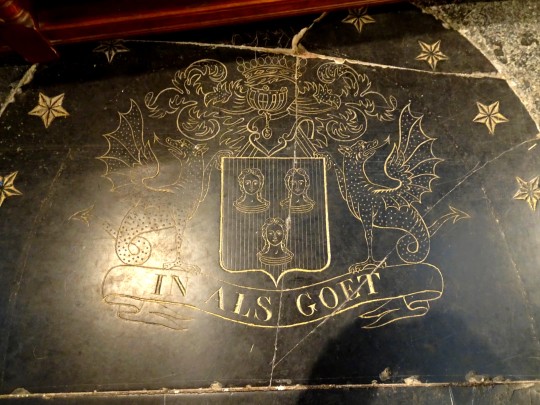

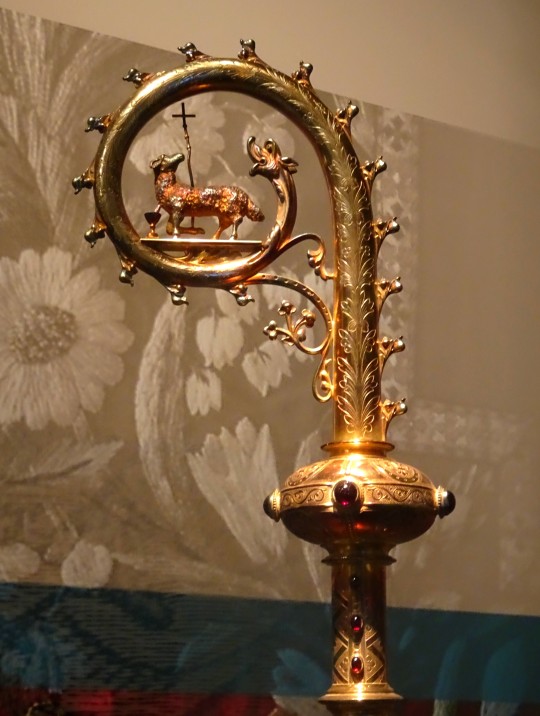

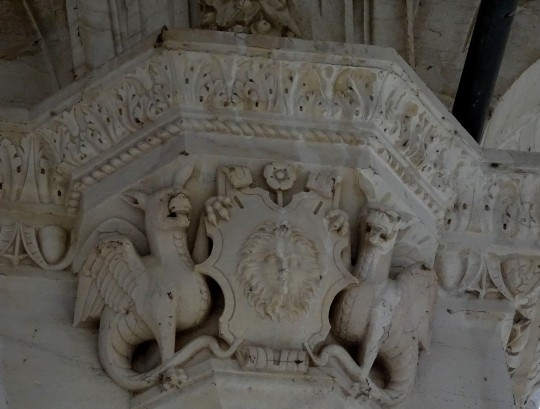


L'année du Dragon arrive !
Une longue série de dragons arrive... Ici des dragons gothiques (ou avoisinants)
Billom (Auvergne)
Tournai (Wallonie, Belgique) - Cathédrale Notre-Dame de Tournai
Paris - Notre-Dame-de-Paris
Marseille, Notre-Dame de la Garde, musée - crosse épiscopale - fin XIXe s.
Mauvezin (Gascogne)
Pau (Béarn) - le Château
Uzès (Languedoc)
Tarascon (Provence) - le château
#dragon#année du dragon#monstre#gothique#art gothique#billom#auvergne#tournai#wallonie#belgique#notre-dame#notre-dame de tournai#paris#notre-dame de paris#notre-dame de la garde#marseille#crosse#crosse épiscopale#évêque#mauvezin#armagnac#gascogne#béarn#pau#uzès#languedoc#tarascon#provence#médiéval
5 notes
·
View notes
Text

Blessing of the flags on the square in front of Notre-Dame in Paris / Bénédiction des drapeaux sur le parvis de Notre-Dame
Antoine-Jean Gros, 1805
#Antoine-Jean Gros#Gros#Bénédiction des drapeaux sur le parvis de Notre-Dame#Notre-Dame#Notre-Dame de Paris#Paris#Notre Dame#napoleonic era#napoleonic#France#first french empire#19th century#french empire#notre dame de Paris#cathedral#church#gothic#Cathédrale Notre-Dame de Paris#Cathédrale#1800s#19th century art#1800s art
8 notes
·
View notes
Text
I saw a post a few days ago around here that they don't like Yuzu's Notre-Dame de Paris costume ansd they're glad he hasn't worn it in so long
😅 well, he did wear it again in 2023. He uploaded the full NDP program skated last year at Sendai's ice rink for Youtube members 🤭
6 notes
·
View notes